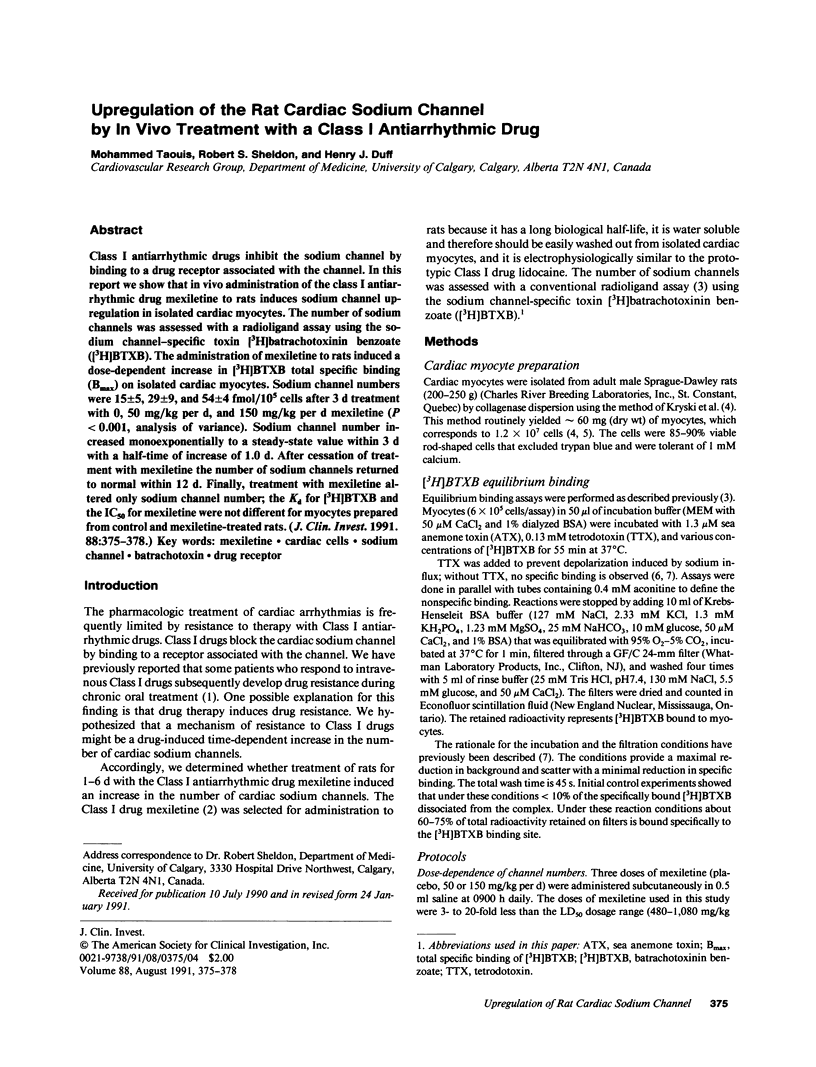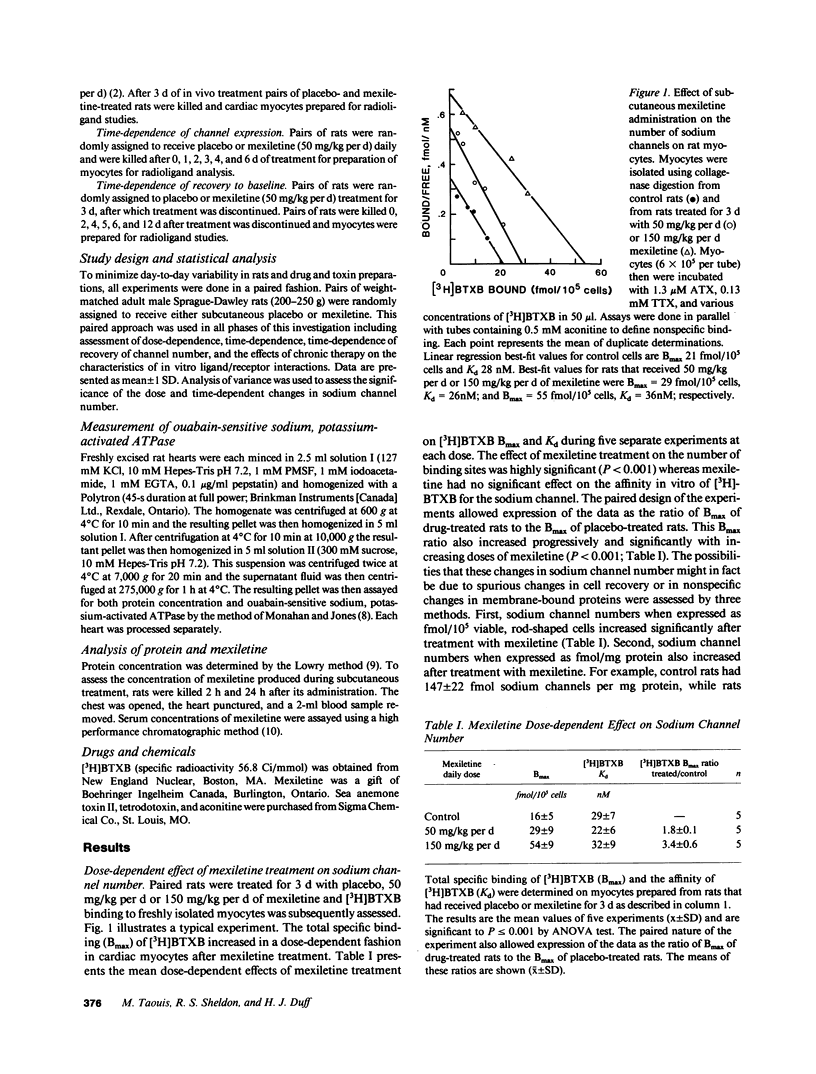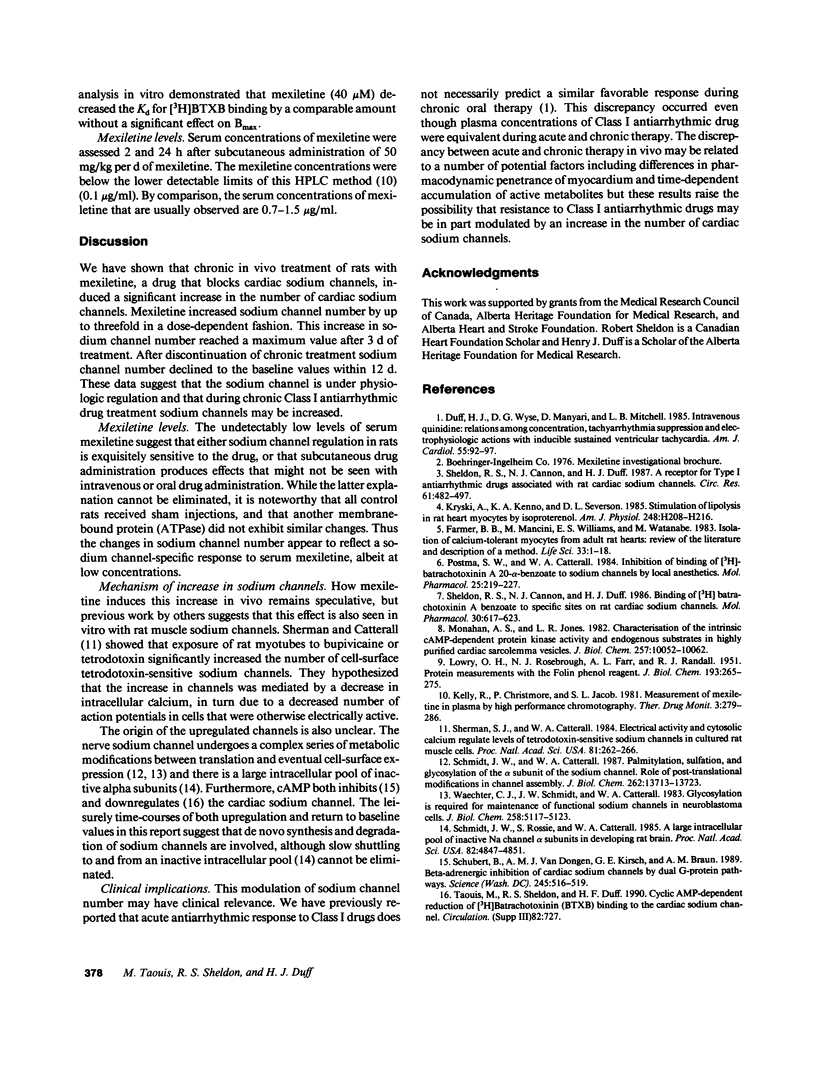Abstract
Class I antiarrhythmic drugs inhibit the sodium channel by binding to a drug receptor associated with the channel. In this report we show that in vivo administration of the class I antiarrhythmic drug mexiletine to rats induces sodium channel upregulation in isolated cardiac myocytes. The number of sodium channels was assessed with a radioligand assay using the sodium channel-specific toxin [3H]batrachotoxinin benzoate ([3H]BTXB). The administration of mexiletine to rats induced a dose-dependent increase in [3H]BTXB total specific binding (Bmax) on isolated cardiac myocytes. Sodium channel numbers were 15 +/- 5, 29 +/- 9, and 54 +/- 4 fmol/10(5) cells after 3 d treatment with 0, 50 mg/kg per d, and 150 mg/kg per d mexiletine (P less than 0.001, analysis of variance). Sodium channel number increased monoexponentially to a steady-state value within 3 d with a half-time of increase of 1.0 d. After cessation of treatment with mexiletine the number of sodium channels returned to normal within 12 d. Finally, treatment with mexiletine altered only sodium channel number; the Kd for [3H]BTXB and the IC50 for mexiletine were not different for myocytes prepared from control and mexiletine-treated rats.
Full text
PDF



Selected References
These references are in PubMed. This may not be the complete list of references from this article.
- Duff H. J., Wyse D. G., Manyari D., Mitchell L. B. Intravenous quinidine: relations among concentration, tachyarrhythmia suppression and electrophysiologic actions with inducible sustained ventricular tachycardia. Am J Cardiol. 1985 Jan 1;55(1):92–97. doi: 10.1016/0002-9149(85)90306-6. [DOI] [PubMed] [Google Scholar]
- Farmer B. B., Mancina M., Williams E. S., Watanabe A. M. Isolation of calcium tolerant myocytes from adult rat hearts: review of the literature and description of a method. Life Sci. 1983 Jul 4;33(1):1–18. doi: 10.1016/0024-3205(83)90706-3. [DOI] [PubMed] [Google Scholar]
- Kelly R., Christmore D., Smith R., Doshier L., Jacobs S. L. Mexiletine in plasma by high pressure liquid chromatography. Ther Drug Monit. 1981;3(3):279–286. doi: 10.1097/00007691-198103000-00009. [DOI] [PubMed] [Google Scholar]
- Kryski A., Jr, Kenno K. A., Severson D. L. Stimulation of lipolysis in rat heart myocytes by isoproterenol. Am J Physiol. 1985 Feb;248(2 Pt 2):H208–H216. doi: 10.1152/ajpheart.1985.248.2.H208. [DOI] [PubMed] [Google Scholar]
- LOWRY O. H., ROSEBROUGH N. J., FARR A. L., RANDALL R. J. Protein measurement with the Folin phenol reagent. J Biol Chem. 1951 Nov;193(1):265–275. [PubMed] [Google Scholar]
- Manalan A. S., Jones L. R. Characterization of the intrinsic cAMP-dependent protein kinase activity and endogenous substrates in highly purified cardiac sarcolemmal vesicles. J Biol Chem. 1982 Sep 10;257(17):10052–10062. [PubMed] [Google Scholar]
- Postma S. W., Catterall W. A. Inhibition of binding of [3H]batrachotoxinin A 20-alpha-benzoate to sodium channels by local anesthetics. Mol Pharmacol. 1984 Mar;25(2):219–227. [PubMed] [Google Scholar]
- Schmidt J. W., Catterall W. A. Palmitylation, sulfation, and glycosylation of the alpha subunit of the sodium channel. Role of post-translational modifications in channel assembly. J Biol Chem. 1987 Oct 5;262(28):13713–13723. [PubMed] [Google Scholar]
- Schmidt J., Rossie S., Catterall W. A. A large intracellular pool of inactive Na channel alpha subunits in developing rat brain. Proc Natl Acad Sci U S A. 1985 Jul;82(14):4847–4851. doi: 10.1073/pnas.82.14.4847. [DOI] [PMC free article] [PubMed] [Google Scholar]
- Schubert B., VanDongen A. M., Kirsch G. E., Brown A. M. Beta-adrenergic inhibition of cardiac sodium channels by dual G-protein pathways. Science. 1989 Aug 4;245(4917):516–519. doi: 10.1126/science.2547248. [DOI] [PubMed] [Google Scholar]
- Sheldon R. S., Cannon N. J., Duff H. J. A receptor for type I antiarrhythmic drugs associated with rat cardiac sodium channels. Circ Res. 1987 Oct;61(4):492–497. doi: 10.1161/01.res.61.4.492. [DOI] [PubMed] [Google Scholar]
- Sheldon R. S., Cannon N. J., Duff H. J. Binding of [3H]batrachotoxinin A benzoate to specific sites on rat cardiac sodium channels. Mol Pharmacol. 1986 Dec;30(6):617–623. [PubMed] [Google Scholar]
- Sherman S. J., Catterall W. A. Electrical activity and cytosolic calcium regulate levels of tetrodotoxin-sensitive sodium channels in cultured rat muscle cells. Proc Natl Acad Sci U S A. 1984 Jan;81(1):262–266. doi: 10.1073/pnas.81.1.262. [DOI] [PMC free article] [PubMed] [Google Scholar]
- Waechter C. J., Schmidt J. W., Catterall W. A. Glycosylation is required for maintenance of functional sodium channels in neuroblastoma cells. J Biol Chem. 1983 Apr 25;258(8):5117–5123. [PubMed] [Google Scholar]


